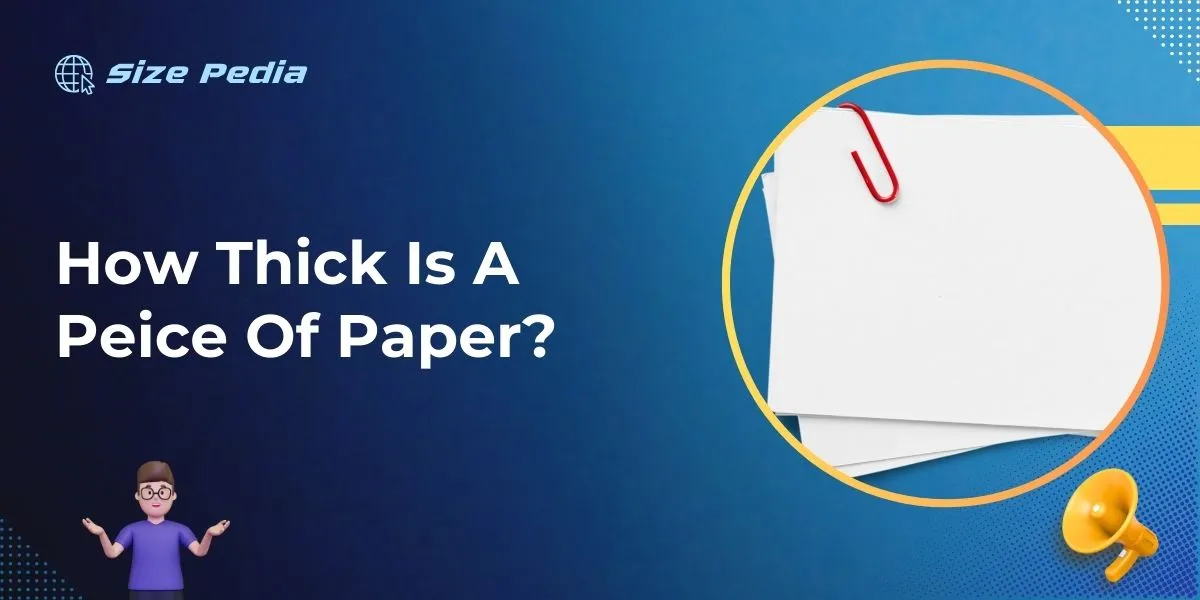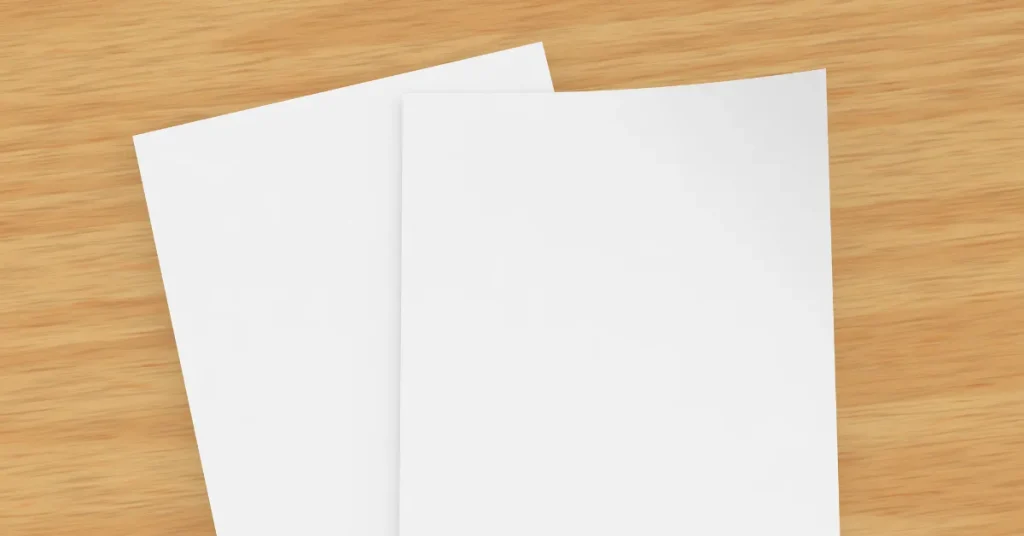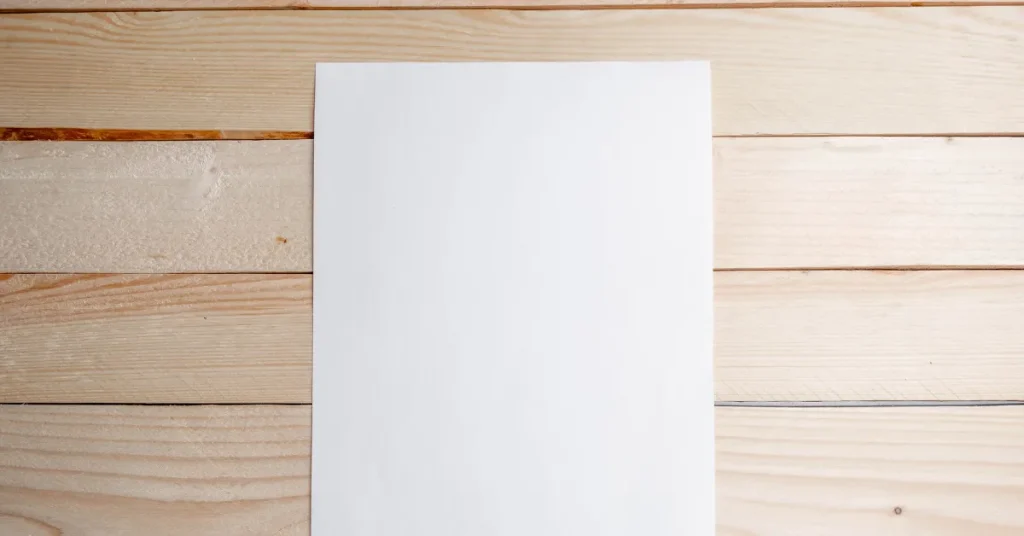The thickness of a standard piece of paper is about 0.1 millimeters. This measurement can vary depending on the paper type and quality.
Navigating through the myriad essentials of an office or artistic venture, one silently ubiquitous element is the humble piece of paper. Deceptively simple, its construction is an intricate dance between durability and functionality, influencing both its texture and weight.
Despite its slender form, paper plays a pivotal role in communication, documentation, and creativity.
It’s critical for varied professionals, from architects drafting blueprints to students jotting down lecture notes, to understand the delicate balance this material maintains between its weight and its strength.
Indeed, the paper’s thickness not only affects its feel and performance through printers or pens but also determines its suitability for different tasks.
With environmental considerations taking center stage, the evolution of paper thickness has also begun to reflect a sustainable approach, integrating perfectly with the need for high-quality, eco-friendly office supplies and artistic mediums.

The Surprising Thinness Of Paper
Paper might seem mundane, yet it holds hidden marvels. One of these marvels is its remarkable thinness. Despite being so thin, paper is durable enough to carry words and images across time and space.
Average Thickness Across Types
Different paper types boast varied thickness levels. Factors like usage and quality affect this measure. Here is a quick overview in table format:
| Type of Paper | Thickness (approx.) |
| Standard Copy Paper | 0.1 mm |
| Glossy Photo Paper | 0.25 mm |
| Cardstock | 0.3 mm |
| Construction Paper | 0.23 mm |
Measuring Techniques For Paper
The correct measurement of paper starts with the right tools. Use these methods for precise results:
- Digital Micrometer: Offers accuracy up to the thousandth of a millimeter.
- Thickness Gauge: A specific tool for measuring paper thickness.
- ISO Standards: Follow ISO 534 for a universal approach.
Remember, always measure multiple sheets together to account for variations in a single sheet. Perform measurements under controlled conditions for consistency.
Paper’s Hidden Strength

Imagine holding a piece of paper. It feels light and thin, right? But don’t let that fool you! Paper has a strength not seen just by looking. It can keep its shape and even hold weight when used correctly.
This is very useful in many situations. Let’s explore the surprising durability of this everyday material.
Structural Integrity Despite Thinness
The thickness of a typical piece of paper is about 0.1 millimeters. Now, that’s very thin! Yet, paper can be really strong. How so? It’s all about how you use it. Fold it, and it can become quite sturdy.
Scientists even study ways to fold paper to make it hold more weight. This idea helps in art like origami and in real-world engineering.
Check out what paper can do:
- Support books on shelves without bending
- Handle being stuffed into envelopes without tearing
- Resist ripping when it’s pulled from both ends
Scientific Rationale Behind Paper Strength
Why is paper strong even though it’s thin? Paper is made from wood. The tiny fibers in wood are like mini ropes.
When these fibers get pressed into paper, they stick together. Science shows us that this creates a tough network. This network makes the paper able to resist force.
| Paper Feature | Contributes To |
| Fiber length | Flexibility |
| Fiber bonding | Tensile strength |
| Layering | Durability |
Interesting Fact: Did you know that adding layers can make paper bulletproof? That’s right! Paper can stop bullets when you have enough layers. This shows the true potential of paper strength.
Manufacturing Mysteries
Delving into the ‘Manufacturing Mysteries’ of paper reveals a world of intricacy often overlooked. The seemingly simple piece of paper is the result of a complex dance between machines and materials.
Here we unfold the layers to understand just how thick a typical piece of paper is by exploring the different processes and materials at play.
Processes Determining Paper Thickness
You might wonder, “What makes some papers thin and others thick?” It’s all about the process. Let’s break it down:
- Pulping – Mixing water and materials to form a pulp.
- Sheet forming – Spreading pulp into a thin layer.
- Pressing – Squeezing out extra water to compact fibers.
- Drying – Heating the paper to remove moisture.
- Calendering – Ironing the paper to a uniform thickness.
Each step can add or compress layers, impacting the final thickness cunningly crafted by skilled hands.
Materials And Their Impact On Thickness
The choice of material is vital to the thickness of paper. Look at these common materials:
| Material | Features | Thickness Impact |
| Wood Pulp | Classic, widely used | Versatile thickness range |
| Cotton | Luxurious, durable | Generally creates thicker paper |
| Recycled Fibers | Eco-friendly, mixed sources | Thickness can vary widely |
| Hemp | Strong, sustainable | Can result in thicker, robust paper |
It is not just the type but also how these materials are combined that defines the final thickness of the paper, ranging from delicate tissue to sturdy cardstock.
The Environmental Angle

Thinking about how thick paper is leads to a bigger question. It’s about our planet’s health. Every sheet of paper has a story that impacts the environment. Let’s dive into the sustainability story of paper thickness.
Effect Of Paper Thickness On Sustainability
Thicker paper often means more resources used. It’s like a thicker slice of bread takes more bread from the loaf. We need to consider these:
- Trees Cut Down: Thicker paper uses more wood from trees.
- Energy Consumption: It takes more energy to make thick paper.
- Waste Produced: More waste builds up if we use paper carelessly.
Choosing thinner paper can help. It reduces tree loss, saves energy, and cuts waste.
Recycling: Does Thickness Matter?
When recycling paper, thickness can play a role. Thin or thick, all paper can be recycled. Yet, the thickness changes the recycling process. Here’s why:
| Thickness | Recycling Process |
| Thin Paper | Easier to process, breaks down quicker. |
| Thick Paper | Takes longer to recycle, uses more energy. |
So, thin paper is friendlier to recycle machines. It helps them run smoothly and efficiently.
Practical Implications In Daily Use
Understanding paper thickness is crucial for various everyday tasks. From printing important documents to creating art, the thickness of paper affects its use. Knowing the right weight can save time and resources.
Let’s dive into how to choose the best paper thickness for your specific needs and understand its relation to print quality.
Choosing The Right Thickness For Your Needs
Different activities require different paper types. Here’s a quick guide:
- Note-taking: Thin, lightweight paper is fine.
- Printing resumes: Choose thicker, higher quality paper.
- Art projects: Thick paper like cardstock is best.
Selecting thickness is not just about feel but purpose. Thicker paper often translates to durability. It is essential for documents that need a longer lifespan.
Thickness Vs. Printability: What Matters More?
Both paper thickness and printability play a role. The goal is to find a balance. Consider these points:
| Thickness | Print Quality |
| Too thick | May jam printers |
| Too thin | May tear easily |
| Ideal thickness | Ensures crisp, clear prints |
An ideal balance ensures quality prints without printer jams. Lighter weight paper is best for everyday use. Heavyweight paper suits special occasions. Always check printer specifications before using thick paper.
FAQs About How Thick Is A Peice Of Paper
How Thick Is An Average Piece Of Paper?
The average thickness of a piece of paper is about 0. 1 millimeters or 0. 004 inches.
How Thin Is A Sheet Of Paper?
A standard sheet of paper is typically about 0. 1 millimeters thick.
How Many Mil Thick Is A Piece Of Paper?
The average thickness of a piece of paper is about 0. 1 millimeters or 100 microns.
How Thick Is 20 Lb Paper?
20 lb paper typically has a thickness of around 0. 0038 inches (0. 097 mm). This weight is common for standard copy paper.
Conclusion
Wrapping up, the thickness of paper varies greatly across types and purposes. From the thinness of tissue to the sturdiness of cardboard, every kind has its unique measure.
Understanding these differences is key for crafts, printing, and packaging needs. Remember, the standard copy paper sits around 0.
1 millimeters thick – a delicate balance of durability and flexibility.
Resources:
1. https://action-press.co.uk/blog/paper-thickness-and-weight-explained/
